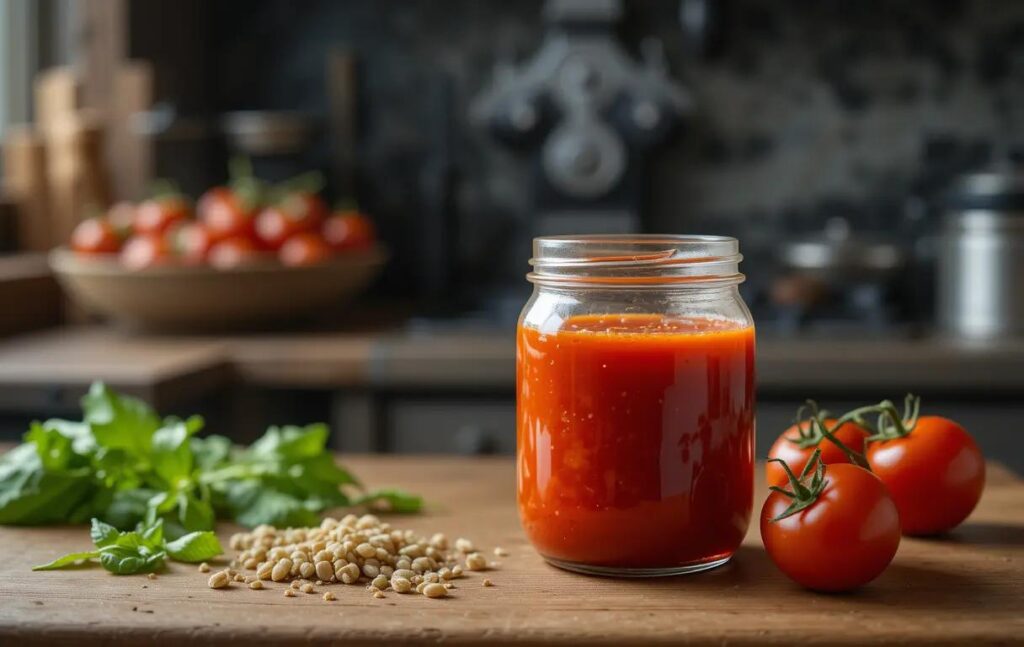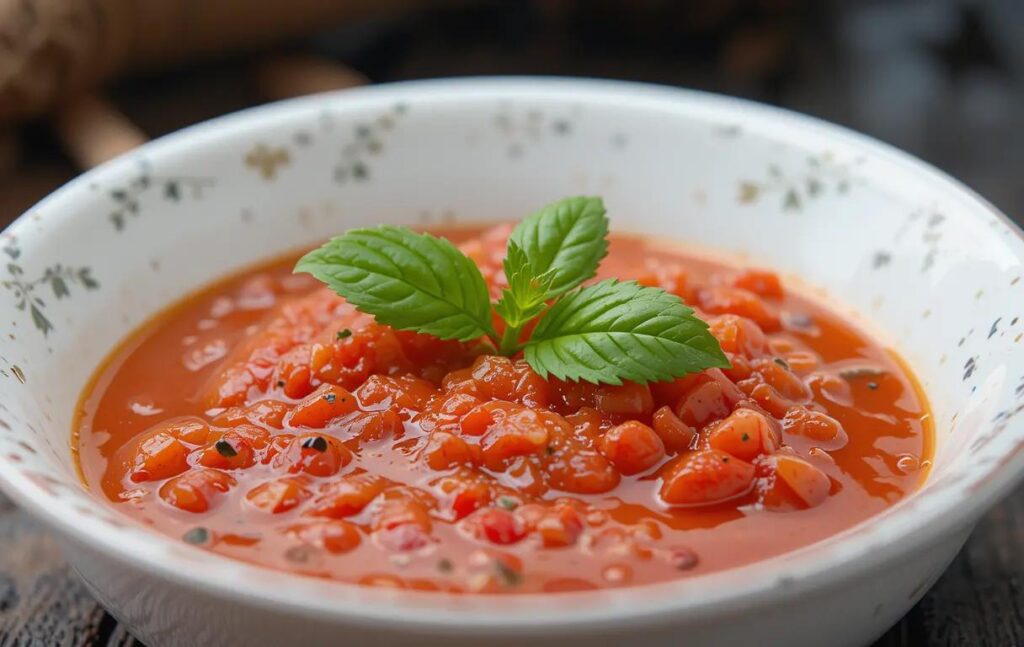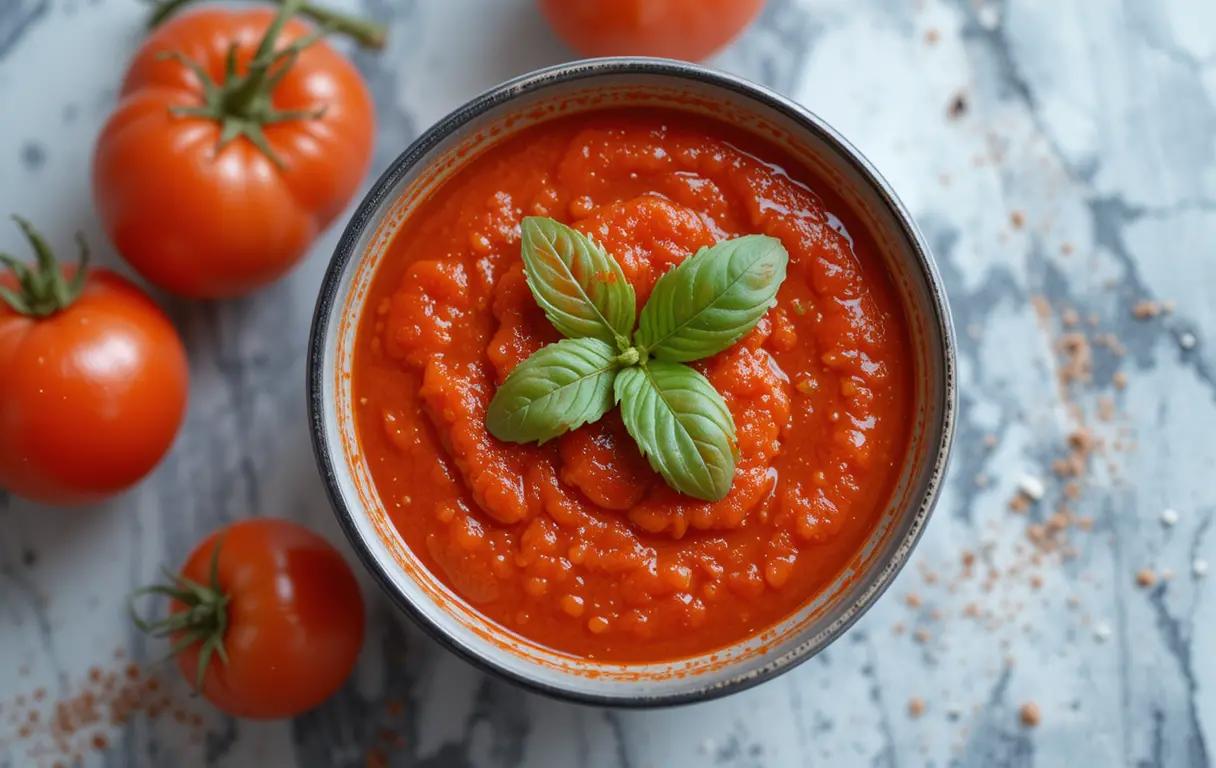Introduction
What is the history of tomato gravy? Tomato gravy has long been a staple in kitchens worldwide, combining rich history with diverse culinary traditions. But what exactly is tomato gravy, and how did it earn its place at the dinner table? This fascinating dish, often confused with tomato sauce, tells a story that spans continents, centuries, and cultures. From its ancient beginnings in the Americas to its role in Southern comfort food, the history of tomato gravy is as flavorful as the dish itself.
Stay tuned as we explore the journey of this humble yet iconic creation, its variations, and its lasting impact on global cuisine.
Early Beginnings
Ancient Roots of Tomato-Based Sauces
The journey of tomato gravy begins in ancient times, long before the dish itself took shape. Tomatoes, native to the Americas, were first cultivated by the Aztecs, Mayans, and Incas. These vibrant red fruits were revered not just for their flavor but also for their vibrant appearance and versatility in cooking. Early preparations included crushed tomatoes combined with spices and used as condiments for various meals.
In Aztec cuisine, tomatoes were often blended with chili peppers, beans, and squash to create complex, flavorful sauces. These early renditions of tomato-based sauces bore little resemblance to today’s tomato gravy but laid the groundwork for its future evolution.
Introduction of Tomatoes to Europe
When Spanish explorers arrived in the Americas during the 16th century, they were captivated by the tomato plant. Initially met with skepticism in Europe, tomatoes were often thought to be poisonous due to their association with the nightshade family. However, their allure as ornamental plants eventually gave way to their inclusion in European cuisines.
By the 17th century, Italians began experimenting with tomatoes, incorporating them into sauces to pair with meats and vegetables. These early tomato sauces, rich in olive oil and spices, were the ancestors of both tomato gravy and marinara sauce. The tomato’s journey from mistrust to culinary fame was swift and transformative, setting the stage for its global influence.
Evolution in Europe
The Role of Tomatoes in European Cuisine
By the 17th century, tomatoes had firmly established themselves as an integral ingredient in European cooking, especially in Italy and Spain. Italian chefs, in particular, embraced the tomato’s natural acidity and vibrant flavor, which balanced the richness of meats and pasta dishes. The creation of tomato-based sauces, such as sugo al pomodoro, became an art form. These sauces were often slow-cooked with garlic, olive oil, and herbs like basil and oregano to enhance their flavor.
Tomato sauces were initially reserved for aristocratic kitchens, where chefs could experiment with exotic ingredients. Over time, these sauces became more accessible to the general population, solidifying their role in Mediterranean cuisine.
The First Mentions of Tomato Sauces
One of the earliest recorded recipes for a tomato-based sauce appears in Antonio Latini’s 1692 cookbook, Lo Scalco alla Moderna (“The Modern Steward”). Latini’s recipe featured tomatoes cooked with onions, peppers, and spices—a precursor to the many variations of tomato-based sauces that followed.
The Spanish, who were responsible for introducing tomatoes to Europe, also developed their unique tomato-based dishes. Salsa de tomate, a Spanish tomato sauce, became a popular accompaniment for roasted meats and seafood. These early European adaptations of tomato sauces served as a bridge between the Old World and the New World, where tomatoes would find their most versatile uses.
With the groundwork for tomato-based sauces firmly established in Europe, the next chapter in the history of tomato gravy would unfold in America. It is here that the dish would transform into a Southern culinary icon, influenced by Creole, African, and European traditions.
Arrival in America
Tomato Gravy’s Journey to America
Tomatoes arrived in America during the Columbian Exchange, a monumental period of agricultural and cultural exchange between the Old and New Worlds. While tomatoes originated in the Americas, their European transformation gave them a new identity when they returned. Settlers and immigrants brought with them recipes that showcased tomato-based sauces, which soon evolved into region-specific adaptations.
In the Southern United States, tomato gravy emerged as a distinct culinary creation. Unlike Italian tomato sauces, which leaned heavily on olive oil and Mediterranean herbs, Southern tomato gravy reflected the resourcefulness of rural cooks. Combining simple ingredients like tomatoes, flour, and milk, tomato gravy became a rich and hearty dish.
This Southern innovation blended African, Native American, and European influences, creating a unique flavor profile that distinguished it from other tomato-based dishes. Served over biscuits, rice, or cornbread, tomato gravy became a comfort food deeply rooted in Southern culture.
Influence of Southern and Creole Cooking Traditions

Southern tomato gravy was heavily influenced by Creole and Cajun cuisines, which were known for their bold flavors and reliance on fresh, local ingredients. Creole cooking, with its French and Spanish heritage, often included tomatoes as a base for stews and gravies. This influence is evident in dishes like shrimp Creole, which pairs tomatoes with spices and seafood.
Cooks in rural areas embraced tomato gravy as a practical way to use pantry staples and stretch meals. Its popularity grew during the Great Depression and other economically challenging times when meat was scarce, and filling meals were essential.
Modern Adaptations
Variations of Tomato Gravy Around the World
Tomato gravy’s versatility has allowed it to evolve into numerous variations across different cultures. While the Southern United States boasts the most iconic version, other regions have incorporated their own twists, blending local ingredients and culinary traditions:
- Creole Tomato Gravy: A spicier variant featuring onions, bell peppers, celery (the “Holy Trinity” of Creole cooking), and sometimes seafood or sausage.
- Indian Tomato Curry: While not called tomato gravy, dishes like makhani use tomatoes as a rich base with cream and spices, creating a luxurious sauce for meats or paneer.
- Italian Ragu: Thick tomato-based gravies like ragu often include ground meat, herbs, and wine, making them a close cousin to American tomato gravy.
These variations demonstrate how tomato gravy transcends borders, appealing to palates across the globe while maintaining its rustic charm.
Differences Between Tomato Gravy and Sauce
One of the most frequently asked questions is: What is the difference between tomato gravy and tomato sauce? While both share a tomato base, their preparation, texture, and uses differ:
- Texture: Tomato gravy is often thicker, achieved by incorporating flour or other thickeners. Tomato sauce tends to be smoother and lighter.
- Ingredients: Gravy recipes often include fat and dairy, while sauces rely on olive oil, garlic, and herbs.
- Usage: Tomato gravy is typically served over starches like biscuits or rice, whereas tomato sauce is paired with pasta or used as a pizza base.
These distinctions highlight the adaptability of tomato-based dishes and the cultural significance of each preparation.
The Cultural Significance
How Tomato Gravy Became a Southern Staple

Tomato gravy holds a special place in Southern cuisine, not just as a dish but as a symbol of resourcefulness and tradition. Born out of necessity in rural kitchens, it showcased how Southern cooks could turn humble pantry staples into flavorful and satisfying meals. Its thick, creamy texture made it ideal for stretching ingredients, while its vibrant tomato base added a burst of flavor to otherwise simple dishes.
During the Great Depression and World War II, tomato gravy gained even greater prominence. With meat and other ingredients rationed, families relied on dishes like tomato gravy to provide nourishment and comfort. Over time, it became more than just sustenance; it evolved into a beloved recipe passed down through generations.
Today, tomato gravy remains a hallmark of Southern hospitality. Whether served at family gatherings, Sunday brunches, or church potlucks, it represents a connection to the past and a celebration of regional culinary heritage.
Memories of Tomato Gravy in Family Kitchens
For many Southerners, tomato gravy is more than a meal—it’s a memory. Its preparation often brings back images of grandmothers stirring pots on the stove, and the anticipation of sitting down to a warm, home-cooked meal. These memories are as integral to the dish’s legacy as its ingredients.
Tomato gravy is also a reminder of simpler times, when meals were crafted with care and shared with loved ones. In an era of fast food and instant gratification, its enduring popularity serves as a testament to the power of tradition and the comforts of home cooking.
FAQs About Tomato Gravy
1. Why is it called “gravy” instead of sauce?
In the South, the term “gravy” often refers to a thickened, savory sauce, typically served over starches. Tomato gravy’s use of flour or other thickeners distinguishes it from lighter, more liquid-based tomato sauces.
2. Is tomato gravy healthy?
Tomato gravy can be a nutritious dish, thanks to its tomato base rich in vitamins and antioxidants. However, its healthiness depends on ingredients For a lighter version, try substituting olive oil and milk alternatives.
3. What’s the best way to serve tomato gravy?
Tomato gravy is traditionally served over warm biscuits, rice, or cornbread. For a heartier meal, pair it with fried chicken or sautéed vegetables.
4. What spices are typically used in tomato gravy?
Common spices include black pepper, salt, garlic powder, and sometimes a pinch of cayenne for heat. Fresh herbs like parsley or basil can add extra depth.
5. Can I freeze leftover tomato gravy?
Absolutely! Store it in an airtight container for up to three months. Reheat gently on the stove, adding a splash of milk or water to restore its creamy consistency.
FAQs About the History of Tomato Gravy
1. Where did tomato gravy originate?
Tomato gravy originated in the Southern United States as a way to stretch simple ingredients into hearty meals. However, its roots trace back to ancient Aztec and European tomato-based sauces that influenced its development.
2. How did tomato gravy become popular in the South?
Tomato gravy gained popularity in the South due to its practicality and flavor. Rural cooks utilized tomatoes, flour, and bacon drippings to create a dish that was both affordable and delicious. It became a staple during challenging times like the Great Depression.
3. Is tomato gravy related to Italian tomato sauces?
Yes, but they have distinct differences. Italian tomato sauces, like marinara, are often lighter and emphasize olive oil and Mediterranean herbs. Southern tomato gravy incorporates thickeners like flour and fats, giving it a creamy, hearty texture.
4. Why is tomato gravy important to Southern culture?
Tomato gravy represents resourcefulness, tradition, and comfort. It’s a dish that has been passed down through generations and is a staple at family meals and gatherings, reflecting the values of Southern hospitality and home cooking.
5. When was tomato gravy first documented?
While the exact first documentation of tomato gravy is unclear, its roots can be connected to 17th-century European tomato sauces and Creole cooking traditions that emerged in America in the 18th and 19th centuries.
Conclusion: Why Tomato Gravy Deserves Its Place in Culinary History
The history of tomato gravy is a testament to the ingenuity and resilience of cooks across centuries and continents. From its ancient roots in the Americas to its transformation into a Southern icon, tomato gravy has bridged cultural divides and brought people together around the table.
Its story reminds us of the power of food not just to nourish but to connect, preserve traditions, and create memories. Whether enjoyed over biscuits at a family breakfast or reimagined in modern recipes, tomato gravy continues to hold its place as a culinary treasure.
Grandpa’s Tomato Gravy
Related Recipes
- “Tuna Tomato Sauce Pasta Recipe“: A tomato-based recipe showcasing another way to use tomatoes.
- “Baked Chicken Fettuccine Alfredo with Broccoli“: Another comforting dish that can be complemented with tomato-based sauces.
Ingredient-Focused Content
- “Lions Mane Mushroom Recipe“: Suggest using a tomato gravy as a flavorful addition for plant-based dishes.
Cooking Techniques and Enhancements
- “Mango Habanero Salsa“: Explore complementary uses of sauces and gravies for flavor diversity.
Storage and Reuse Tips
- “Sous Vide Recipes“: Recommend tomato gravy as a sauce for sous vide-cooked meats or vegetables.
- “Ocean Spray Cranberry Sauce Recipe“: Guide readers on making and storing sauces, including tomato gravy.

